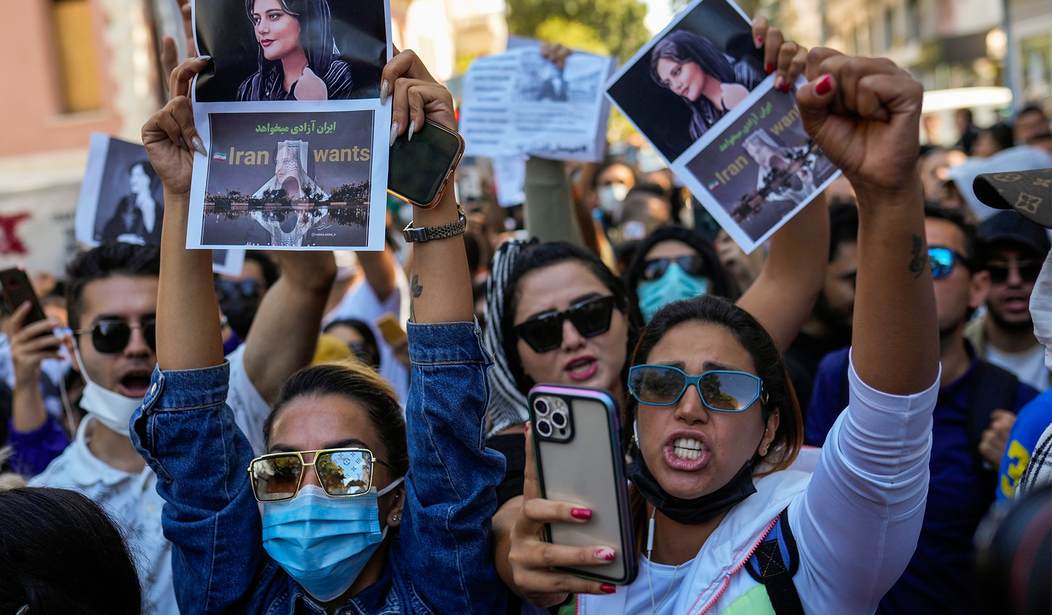Dozens of additional schoolgirls have been sickened by what appears to be a “toxic gas,” according to authorities. They join hundreds of schoolgirls in more than 30 schools in at least ten of Iran’s 31 provinces who have become ill since November, and terrified parents have taken to the streets to blame the government for the attacks.
“Basij, Guards, you are our Daesh,” protesters chanted, likening the Revolutionary Guards and other security forces to the Islamic State group.
@CNN
Brutality at its peak in our schools across Iran. Widespread crime at this level and magnitude wouldn't be possible without the full sport of IRGC. pic.twitter.com/vQSSAvxWSD— Persian (@Persian61666609) March 5, 2023
President Ebrahim Raisi is calling the attacks “the enemy’s conspiracy to create fear and despair in the people.” It would be out of character for Israel to target little girls in an attack. Far more probable is an attack from the Khamenei-controlled Revolutionary Guards or an even more extreme faction in the government that disapproves of girls learning anything at all.
Last week, Iran’s deputy health minister, Younes Panahi, said the poisonings were aimed at shutting down education for girls. “After the poisoning of several students in Qom schools, it was found that some people wanted all schools, especially girls’ schools, to be closed,” the official IRNA news agency quoted him as saying at the time.
The poisonings come more than five months into nationwide protests after the death in custody of Mahsa Amini, 22, who had been arrested for an alleged breach of strict dress rules for women.
The Iranian government is so factionalized that it’s entirely possible that there is a radical faction seeking revenge on schoolgirls who were at the forefront of the protests.
A beautiful protest in Karaj, Iran, where schoolgirls are chanting: Freedom!
This is Iranian new generation’s revolution against gender apartheid regime.
The girl who took this video wrote to me: We are not scared, we don’t want to live with humiliation.#MahsaAmini#مهسا_امینی pic.twitter.com/Iy57NsDv5t— Masih Alinejad 🏳️ (@AlinejadMasih) October 4, 2022
Iranian high school girls are leading protests in various areas of Iran.
Almost all segments of society want this regime to go.
These girls in this video have taken enormous risks to protest, but Iranians know that freedom isn’t free.#MahsaAmini
pic.twitter.com/OzjpydH2mL— Masih Alinejad 🏳️ (@AlinejadMasih) October 4, 2022
Suspicion in Iran has fallen on possible hard-liners for carrying out the suspected poisonings. Iranian journalists, including Jamileh Kadivar, a prominent former reformist lawmaker at Tehran’s Ettelaat newspaper, have cited a supposed communique from a group calling itself Fidayeen Velayat that purportedly said that girls’ education “is considered forbidden” and threatened to “spread the poisoning of girls throughout Iran” if girls’ schools remain open.
Iranian officials have not acknowledged any group called Fidayeen Velayat, which roughly translates to English as “Devotees of the Guardianship.” However, Kadivar’s mention of the threat in print comes as she remains influential within Iranian politics and has ties to its theocratic ruling class. The head of the Ettelaat newspaper also is appointed by Supreme Leader Ayatollah Ali Khamenei.
No one wants to hear this, but there is a growing possibility that the “attacks” aren’t attacks at all. In fact, we may be witnessing mass psychogenic illness among schoolgirls whose own fear is being reinforced by their parents’ anxiety.
An initial investigation into the poisonings found something odd.
A government probe indicated that the poison in the schools contained nitrogen dioxide, according to Alireza Monadi, the head of parliament’s education, research and technology commission. He added that the poison disappeared quickly in the body of its victims and was difficult to detect.
“Observations indicate that the enemy is behind these actions,” he said.
Nitrogen dioxide also forms from vehicles and power plant emissions, which have contributed to the high levels of air pollution in Iran.
Similar reports of poisoning occurred in Afghanistan in 2012 and 2016. After an investigation by the UN, including toxicology tests, “no trace of chemical gas or poison” was found.
The U.N. concluded that the symptoms experienced by the girls were likely the result of mass psychogenic illness, a form of social panic that mental health experts say occurs against a backdrop of anxiety, manifesting in genuine physical symptoms.
“It was unequivocally not a physical phenomenon, but that doesn’t diminish the fact that the girls were suffering,” the former U.N. official in Afghanistan said. “But it does highlight the mental pressures of being a teenage girl in these oppressive places.”
I doubt we will ever be able to definitively say that what was “poisoning” the schoolgirls was a form of mass hysteria. But with no obvious cause of the schoolgirl’s sickening, some other explanation — perhaps having to do with the oppressive nature of Iranian society for young girls — could be as good an answer as any.










